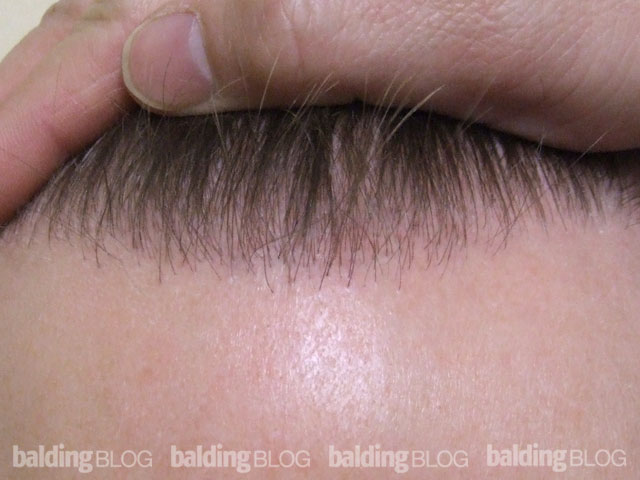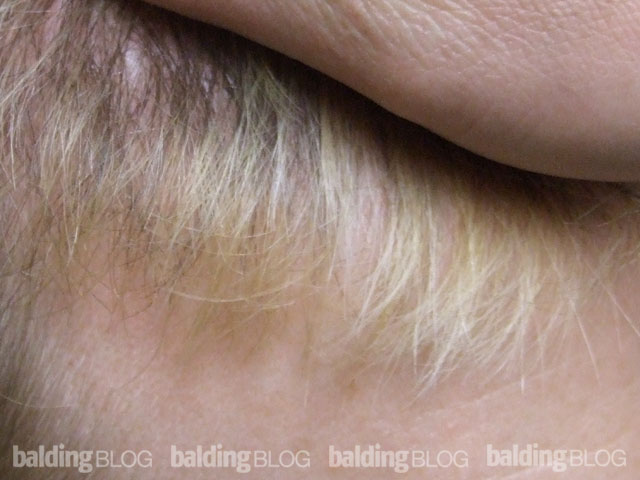Dr.Rassman, What is hair mapping? I have a derm doctor. He did a biopsy that showed AGA. I am 59, female. I started taking Prempro again, with hope of keeping what hair I have. Who do you think I should see in the Orland Park IL. area? I have lost more than half of my beautiful hair! I am at the moment using steroid gel on the bald spots every day, I really value your opinion.Where do I go from here? I will travel any where…
P.S. My doctor loves your site/ He said he would follow your instructions!
Hair mapping means that a physician is using a densitometer or video magnifying camera to look for miniaturized hairs at multiple sites on your head. The percentage of miniaturized hairs and the thickness change in those miniaturized hairs will determine:
- if a balding process is going on
- the pattern of the balding process
- over time and advancement or regression of the balding process
Based upon the many different published patterns of hair loss, the doctor can determine:
- what pattern of hair loss you are demonstrating or probably evolving into
- a look into your future hair loss based upon his/her experience with that particular pattern of hair loss as it conforms to the published patterns (e.g. Norwood Chart)
- the overall health of the hair in different parts of the scalp
For example, if a man has extensive miniaturization of hair in the Norwood Class 6 pattern (under microscopic examination), he may advance to a fully bald Class 6 pattern (even if it is not evident to the naked eye). Miniaturization is looked at in two ways; first, the total number of normal vs miniaturized (narrow shafted) hair, and second, the degree of overall miniaturization on a per hair basis (e.g. 80% of the hairs are miniaturized with an average hair loss 50% of its original diameter). If, over time, the percentage of miniaturized hairs stay the same, but the diameter of the hair shafts increase to, let’s say, 80% of their original diameter with a person on Propecia, the change can be documented as benefiting from the Propecia, or reduced to 20% of its original diameter, indicating a progression of the miniaturization and a failure to respond to the Propecia.
For women with genetic hair loss, miniaturized hair follows very different patterns than for most men. For the transplant surgeon, it is critical to know the miniaturization that is going on in the proposed ‘donor area’, for if the hair in that area shows significant miniaturization (diameter reductions and the percentage of hair involved in the process), then most of the hair that is used for donor hair will fail to survive a transplant, because the miniaturized hair will not have value in the new location. As an example, if a woman needs hair in the frontal hairline but has 80% miniaturized hair in the sides and back of the head, then one would assume that 80% of the hairs that are transplanted will fail when moved from this donor area.
For the male patient who is going on Propecia, getting baseline measurements will tell something about the changes in the hair after a reasonable treatment period. An example of this would be: a young man who had 90% miniaturized hairs in the hair population from a balding area measuring a 3 inch circle in the back of the head. Let’s say he was started on Propecia and then 8 months later, the miniaturization came down to 50% of the hair in the circle. That means the drug is working nicely and some reversal of the impact of genetic balding on the 3 inch circle in the back of the head had responded to treatment.
So you can see that the value of measurements here are both for diagnosis (what is causing the hair loss and how bad it is) and prognosis (predicting the future with and without treatment). If measurements are not made, then there is no sense of control for the doctor or the patient and the cause of the hair loss can not be followed intelligently. Measurements are the foundation for clinical science. A patient with compromised kidney function gets a blood test to see the progress of the disease and the value of any treatments given. The electrocardiogram (ECG) measures the damage of the heart after a heart attack or predicts a pending heart attack. I can go on and on here, but basically, hair should not be treated any differently than other sick organ systems. There must be an end of the days when a doctor runs his fingers through your thin hair and says (somewhat magically) that he knows what is wrong and how to fix it, he knows that the density is good or you are not going bald.
Blood work will help rule out other causes of hair loss such as hypothyroidism, anemia, hormone imbalance, and malnutrition.
![]()
![]()




